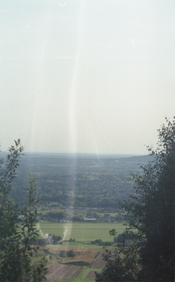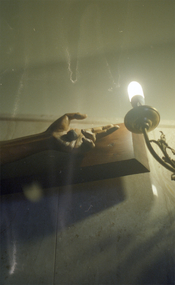The problem is with the lab, and this is probably bad news for you, as there are few labs in Poland that process ECN2.
They don't do it automatically, but manually in tanks.
If it were a regular C-41 lab, you'd probably get a huge scolding instead of polite replies.
The remjet isn't on the emulsion side, so it doesn't affect development.
Removing it might be a problem, but not after the film has been in the camera for two months. This is more likely to be the case with films that are many years out of date.
However, I don't recommend keeping the ECN2 film in the camera for several months, as these films weren't designed to wait long for development after exposure.
If these are remnants of the remjet, it means that the guys from the lab didn't do a good job and removed it carelessly.
But in your case, similarly to
@Dr. no I see rather streaks after the final bath. This means the lab did it carelessly.
If I were you, I'd rinse the film again.
If you don't have Kodak Photo-Flo or the even cheaper Czech Fotonal, simply use dishwasher rinse aid (regular, clear, unscented).
A few drops per liter of warm water (preferably distilled or demineralized). Rinse the film again in this bath. Be careful not to scratch the emulsion.
Then hang the film and run two wet fingers from top to bottom. Gently, being careful with the emulsion.
This should solve your problem.







